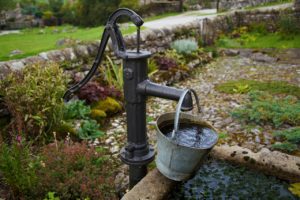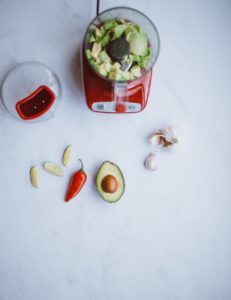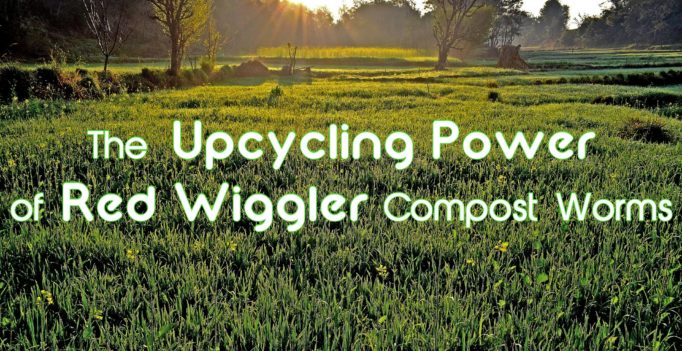Have you made red wiggler composting worms part of your green living strategy?
Whether you’ve harnessed the mighty composting power of Eisenia fetida or never heard of them, today you’ll see just how impactful a single pound of red wigglers can be. And since we are not one, but many, we’ll explore our combined potential too.
Trash Stats
We are dealing with a global crisis here. Americans alone toss out 150,000 tons of food each day. If that doesn’t hit home, I should add that that comes down to a daily contribution of one whole pound of food waste per person, per day. Does that sound about right for you?
This creates an exceedingly heavy toll on the environment. Millions of acres of the earth are covered over by our trash each year. And we can help bring that to a stop. Yep, you, me, and a pound of worms to be exact.
In their natural setting, these incredibly efficient creatures spend their lives enjoying a diet of rotting leaves, manure, and decomposing organic matter of all sorts. Worm farmers who raise red wigglers in captivity feed them all kinds of organic matter too, only this stuff is otherwise known as trash.
Garbage eating worms! It’s strange but true. And why should we care about that? It’s because these small but mighty creatures can save our butts by upcycling the heaps of stuff we throw out!
Reduce, Reuse, Recycle, Upcycle!
Upcycling is taking an existing thing and transforming it into a new and often better thing. The new and better thing compost worms create is rich, natural, FREE, and bountiful fertilizer!
What’s so great about fertilizer? Remember all that damage I said we’ve been doing to our planet? It doesn’t stop with the landfills. Our trash has polluted the air, water, and soil beneath our feet.
As toxins move into the soil, beneficial microbes and nutrients move out. Plants die, animals leave and the land is depleted.
Composting worms create a product that when added to soil restores life. As rain washes these nutrients deep into the soil, roots become strong and plants vibrant. This is the good stuff, the fertilizer that heals, protects, and brings balance back to your natural surroundings.
In no time, you realize you’ve reduced your need for irrigation, have no need for commercial or chemical fertilizers, you’re reusing what once was trash, and you’ve upcycled something old into something new and better.
The entire thing just feels so good!
Pound for Pound
With an average of about 1,000 worms in each, just one pound is all it takes to start a family out with the admirable practice of worm composting.
Now, they say that this species (Eisenia fetida) consumes, on average, enough food to equal half its body weight per day. Sometimes more, sometimes less, but overall impressive, right?
The variation in their rate of consumption mostly depends on environmental conditions. When the temperature, moisture, and pH levels are right, red wigglers feast and frolic around the clock. If their surroundings aren’t comfy cozy, red wigglers just wait.
So if your pound of worms consumes half a pound of food every 24 hours, you could contribute to three and a half fewer pounds of landfill each week, and would redirect a whopping 182 pounds of waste within a year!
But what of it all? We know they are mighty and effective. They consume garbage like nobody’s business, but how much do these worms give back?
Upcycling by the Numbers
What starts as food waste doesn’t just disappear once we close the lid of the worm bin. Nope, with red wigglers, everything you throw in is eaten then upcycled into nature’s perfect compost.
So, let’s crunch the numbers and figure out the upcycling potential of these hard workers.
Of course, what goes in must come out. And that is what we’re after today. Between their bedding and actual food scraps, a worm’s diet consists of about 70% water. As that food digests and metabolizes, water is drawn out leaving a waste product (casts) that contain closer to 20% water.
Therefore, the mass of what we gather will be far less than what we put into the worm bin. Using our 182 lbs of food example, we could imagine that 127.4 lbs of that would be water. That leaves us with 54.6 lbs of organic matter going into the bin, plus 20% water weight, and we end up with about 68 lbs of fresh natural fertilizer each year!
 Healing the World One Worm Bin at a Time
Healing the World One Worm Bin at a Time
Seriously impressive, right? And you can make this add up year after year, right at home, with nothing more than an ordinary worm bin and starter pound of worms.
Having a worm bin is very much like having another recycling bin, but for food and paper instead of plastic and glass. And did you catch that last point? Compost worms take care of our paper waste too! Just think of how quickly all that junk mail could become something of actual value!
Keeping Up Production
Worm composting runs 24/7 in the worm bin. Worms don’t go to sleep at night as we do. They do a lot of chillin’, but a real lot of eating, pooping, and making babies. The thing is, all of this productivity is completely reliant upon the quality of their environment.
When these are all jivin’ your worms will crank up the feeding and take down your waste at super speed. If things get a little chilly, too dry, or start to stink, chances are conditions are off and your worms will begin to lay low.
Inside the worm bin, ideal temperatures range between 55-77F, similar to how we like it. They do however prefer things a bit more moist than most of us. A muggy 80% humidity is what they like best. Not surprising since they can only breathe through wet skin. And last, those delicate worms need an average pH in the bin that is neither acidic or alkaline but remains neutral.
I don’t like to take chances with the conditions in my worm bins. I check them frequently and regularly use a probe meter to measure moisture, temperature, and pH levels. You can see which kind I use here.
Speeding Up Production
Now, even on a perfect day, when the bin is warm and humid and the worms are really hungry, they’ll only be able to consume what’s consumable. Which means, you could throw a whole apple in there, but if it’s still whole, it’s not getting eaten for a looooong time.
Conversely, if you chuck that apple into your Vitamix and turn it into applesauce, you’ll have something that even the wee worms can eat right away. The faster your worms can take in the food, the faster it will be upcycled.
If you can’t blend it, chop it. Whatever creates the greatest surface area will be the most effective.
Tip: Sometimes using a blender results in too liquidy a mixture. When that happens you can add pieces of paper egg carton to absorb the moisture. After a few minutes, pulse the blender and incorporate the paper right into the mix.
Be careful about what you add to your blender! Always follow manufacturer’s recommendations!
Exponential Impact
Now what I didn’t figure into our upcycling calculations above was nature taking it’s course, if you will. Hypothetically speaking, any worm farm worth its dirt, and starting with 1000 mature red wigglers, would experience a rapid population increase throughout a year.
What would start as a single pound of mature adults could potentially result in 752,527,609 hungry adults by years end! And don’t forget about all those juvenile worms, they add up quickly! But don’t worry, worms self-regulate their population. You’ll never experience a worm take over.
However, if each of The Squirm Firm subscribers kept just one pound of worms for a year, together our impact would reduce 293,202 pounds of food waste alone! And when you factor in reproduction and a lifetime of worm composting, it’s staggering to imagine how significant our combined impact could be!
How many pounds of worms do you have? You can use this handy worm composting calculator to see how quickly your worm workforce can increase.
Generational Impact
Speaking of Exponential Impact, upcycling with worms is great for people of all ages and walks of life. It’s become a lifestyle my whole family enjoys. Now, we keep a Worm Factory 360 right in our kitchen.
When friends and family stop by it’s a topic of conversation. An opportunity to invite others into a movement to heal our environment. I often share some worms to get a friend started with worm composting, and show them where to find the style of worm bin I use. You can find it here at an affordable price.
Using it is as easy for my kids as anyone and it makes meal clean up much more enjoyable. They simply lift the lid and scrape their fruit and veggie scraps right in. This simple practice means fresh compost whenever we want it and much less trash to haul off to the curb each week. It’s a win-win!
Purchase your own worm bin and a pound of worms to help reduce waste and harvest fresh, rich compost year round. Join the movement today and give our world a better tomorrow.
Inspired? Share this article and a pound of worms with a friend!
Happy worm composting!


I’ve had a worm farm for 6 months but recently it has become invested with small flies and their tiny maggots. Is there anything I can do to irradicate them.
Thank you David